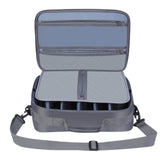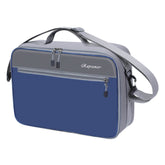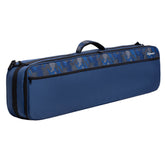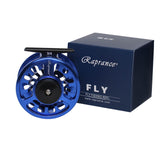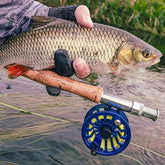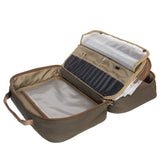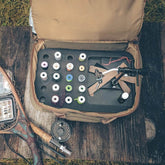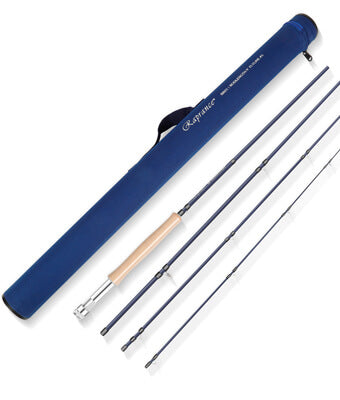Fly Rod: Choosing the Right Fly Fishing Rod for Trout, Bass, and Salmon
Choosing the right fly rod is essential for successful fishing, whether targeting trout, bass, or salmon. A specialized fly rod enhances casting precision and allows for a better presentation of flies, which is crucial for enticing these species. Each type of fish has specific requirements that can influence rod selection, from action to weight.

For trout, I prefer a lighter rod that offers sensitivity and finesse. When fishing for bass, a sturdier and longer rod can provide the necessary power for casting larger flies and handling aggressive strikes. Salmon fishing often demands a robust rod capable of managing strong currents and larger fish sizes, emphasizing the need for proper gear based on your target.
I often compare a fly rod to a spinning rod, as each has its unique advantages and techniques. While spinning rods are great for versatility and ease of use, fly rods require more skill and technique, particularly in casting. Understanding the differences in rod action and the right tackle setup can greatly improve my fishing experience.
Fundamentals of Fly Fishing Rods

When selecting a fly fishing rod, factors such as rod weight, action, and compatibility with fly line and leader materials come into play. Understanding these fundamentals helps improve casting techniques and overall fishing success.
Choosing the Right Rod Weight
The rod weight is crucial as it influences how easily you can cast different types of flies. For trout, a lighter rod such as a 3 to 5 weight is ideal for delicate presentations. When targeting bass, a heavier rod, usually a 6 to 8 weight, provides the strength needed for larger flies and stronger fish.
For salmon, an 8 to 10 weight rod is standard. This weight helps handle the powerful runs of salmon and larger flies used in their pursuit. To determine the appropriate weight, consider both the type of fish and the environment where you’ll be fishing.
Understanding Rod Action and Flex
Rod action refers to how the rod bends while casting. Fast-action rods bend near the tip, allowing for quick, powerful casts. These rods are great for longer distances and larger flies. Medium-action rods, which flex in the middle, provide a balance between distance and accuracy, making them versatile for various conditions.
Slow-action rods bend throughout, offering greater sensitivity for lighter lines and delicate casts. Understanding your preferred style and fishing conditions will help determine which action suits you best.
Fly Line and Leader Fundamentals
Choosing the right fly line is essential for effective casting. Floating lines are common for most freshwater fishing, while sinking lines are ideal for deeper water. Line weight should match the rod weight for optimal performance.
The leader connects the fly line to the fly and is critical for presentation. A tapered leader provides a smooth transfer of energy for better casting. The length and thickness of the leader depend on the type of water and fish targeted.
In general, for clearer waters or skittish fish, longer, lighter leaders are preferable, while shorter leaders can handle rough conditions or larger flies better.
Selecting a Fly Rod for Different Species
When selecting a fly rod, it’s essential to consider the target species, as different fish require specific rod characteristics. Here’s a look at how to optimize your fly rod choice for trout, bass, and salmon.
Optimizing for Trout
For targeting trout, I prefer a lightweight rod, typically in the range of 3 to 5 weight. These rods offer the sensitivity required to detect subtle bites and enable accurate casting in smaller streams. Length plays a role too; a 7 to 9-foot rod provides versatility for both tight spaces and open water.
- Material: Graphite is common for its sensitivity and responsiveness.
- Action: A moderate action rod gives excellent control with delicate presentations.
- Line Preference: Utilize floating lines for dry flies, while sinking lines may be effective for nymphing.
Customizing for Bass
When I focus on bass fishing, I opt for a heavier rod, generally in the 8 to 10 weight range. Bass can be aggressive, and I need a rod robust enough to handle larger flies and combat strong fish.
- Length: A 7 to 9-foot rod provides the necessary leverage and casting distance.
- Action: A faster action rod allows quick hook sets and precise casting, especially during topwater fishing.
- Line Types: I often use weight-forward floating lines for quick surface presentations or intermediate sinking lines for subsurface strategies.
Specializing for Salmon
In pursuit of salmon, I select rods in the 8 to 10 weight category, as their size demands strength and resilience. Salmon fishing often involves larger streams or rivers, so rod length should ideally be between 9 to 10 feet for effective control.
- Action: A fast action is crucial to handle the weight of heavy flies and active fish.
- Line Selection: I frequently rely on sinking lines for deep-water presentations, especially in currents.
- Guiding Techniques: Using a rod with a good backbone helps when fighting powerful runs that salmon are known for.
Selecting the right fly rod is crucial for maximizing success in my fishing endeavors. Understanding the nuances between species allows for a more tailored approach and improves overall performance on the water.
Comparison of Fly Fishing Rods and Spinning Rods

In discussing fly rods and spinning rods, it's essential to evaluate their casting techniques and performance in varying water conditions. Each rod type possesses unique characteristics that influence how anglers approach different fishing environments.
Casting Differences
Fly rods require a distinct casting technique due to their design and the weight of the line. The focus is on the line itself, with the fly acting as a light lure. I often use a double haul cast, which enhances line speed and distance, allowing for precise placements in targeted areas.
In contrast, spinning rods utilize a different approach. The lure's weight aids in casting, allowing for a straightforward overhead cast. This technique is generally easier for beginners, as it requires less specialized skill. I’ve noticed that spinning rods enable quicker retrieval and adjustment of lures, making them versatile in various situations.
Performance in Various Water Bodies
When considering performance, fly rods excel in rivers and streams. Their lightweight design offers superior control over delicate presentations, which is crucial for enticing trout or other species in fast-moving waters. In my experience, this rod type facilitates precise casting to specific pockets where fish are hiding.
Spinning rods, on the other hand, shine in lakes and larger bodies of water. Their robust design allows for handling heavier lures and greater distances. I find that spinning gear is ideal for catching bigger species like bass and salmon, where bait movement needs to mimic natural prey more aggressively. Each rod type has its strengths, tailored to the environment and targeted species.
Expert Advice on Gear and Techniques
Choosing the right gear and mastering casting techniques is essential for a successful fly fishing experience. I'll explore insights from leading brands and share effective casting methods to enhance your skills on the water.
Brand Insights: Orvis, Sage, and G. Loomis
When selecting a fly rod, I recommend considering brands like Orvis, Sage, and G. Loomis for their reliability and performance.
-
Orvis: Known for their quality craftsmanship, Orvis offers a range of rods suitable for various skill levels. Their slow action rods are particularly beneficial for beginners, allowing for easier casting and better sensitivity.
-
Sage: Renowned for innovation, Sage rods typically have faster action. Their Pulse series excels in precision and distance, making them ideal for seasoned anglers targeting species like trout.
-
G. Loomis: This brand is famous for its lightweight designs and sensitive tips. Their Nrx+ series provides excellent performance and versatility, accommodating different fishing techniques.
Advanced Casting Techniques
Mastering casting is crucial for effective fly fishing. I find the following techniques invaluable:
-
Double Haul: This involves pulling the line with both hands during the casting stroke, which increases distance and line speed.
-
Roll Cast: A simple yet effective technique for casting when backcasting is not an option. It’s useful for tight spaces.
-
Sidearm Cast: This technique helps avoid obstacles behind you. Angling the rod down allows for a smoother cast.
By practicing these methods, I have improved both my distance and accuracy, making for a more enjoyable experience on the water.

